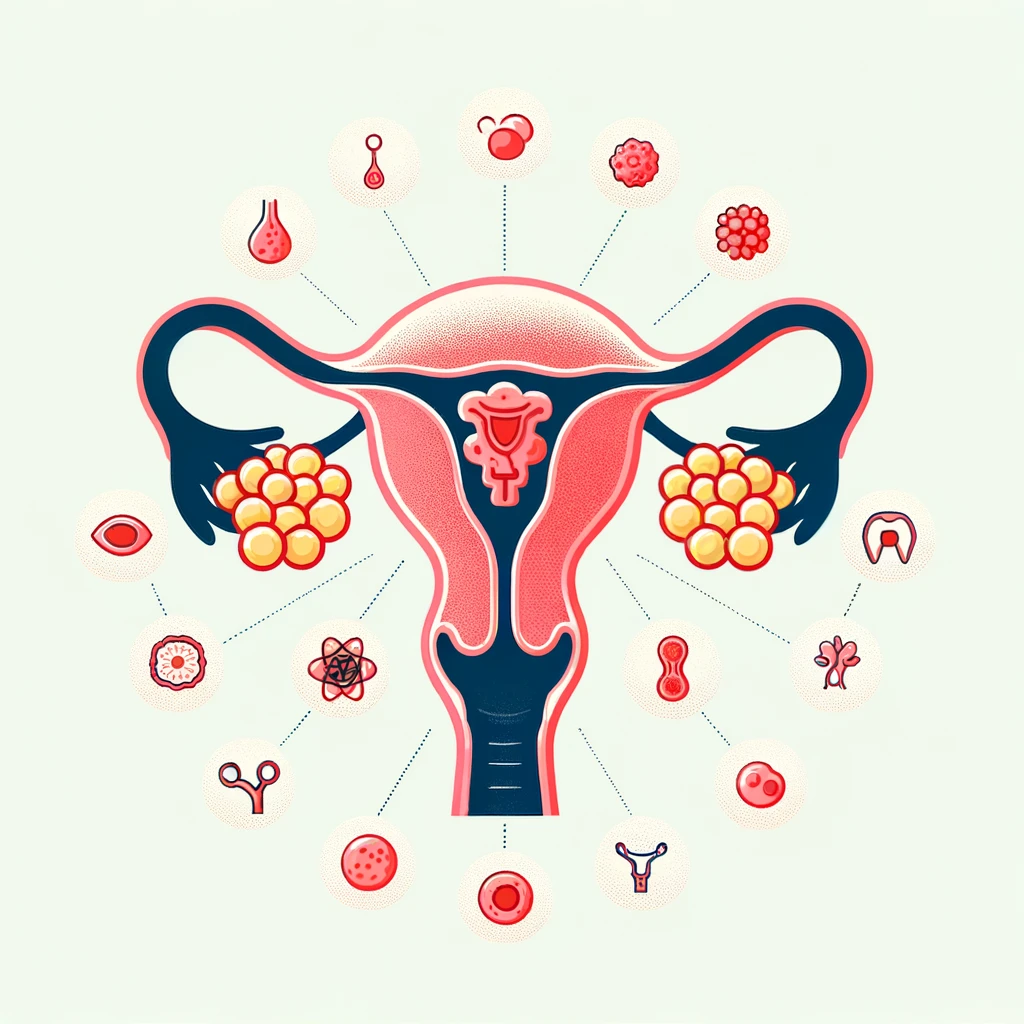Uterine Fibroids: Symptoms, Diagnosis, Coping Strategies, and Treatment Options

Dr. Craig Smith, MD
4 Min read
Uterine fibroids, noncancerous growths in or on the uterus, are remarkably prevalent, affecting about 20-80% of women by the age of 50, according to the American College of Obstetricians and Gynecologists (ACOG). While some women may experience no symptoms, others face challenges that significantly impact their daily lives. This article aims to delve into the symptoms of fibroids, the diagnostic process, coping strategies, and available treatment options.
Symptoms of Fibroids:
- Menstrual Changes: Heavy menstrual bleeding (menorrhagia) is reported by approximately 30% of women with fibroids, leading to prolonged periods or bleeding between cycles, as noted by the National Institute of Child Health and Human Development (NICHD).
- Dysmenorrhea, or painful periods, is a common symptom affecting nearly 70% of women with fibroids, according to the Fibroid Foundation.
- Pelvic Pain and Pressure: Fibroids contribute to a feeling of fullness or pressure in the lower abdomen, causing pelvic pain or discomfort, especially during sexual intercourse, affecting about 25% of women with fibroids, according to a study published in the Journal of Women's Health.
- Urinary Symptoms: Fibroids pressing against the bladder can result in increased urgency to urinate and a sense of incomplete emptying. Research from the American Journal of Obstetrics and Gynecology estimates that approximately 30% of women with fibroids experience urinary symptoms.
- Gastrointestinal Symptoms: Fibroids near the rectum may cause constipation, affecting up to 20% of women with fibroids, according to a study in the American Journal of Epidemiology. Additionally, fibroids affecting the back of the uterus can cause lower back pain.
- Enlarged Abdomen: Fibroids can cause the uterus to enlarge, resulting in a noticeable increase in the size of the abdomen. The Fibroid Foundation reports that fibroids are responsible for about one-third of all hysterectomies performed annually.
Diagnosis:
- Pelvic Examination: A healthcare provider may detect fibroids during a routine pelvic examination, feeling for abnormalities in the uterus.
- Imaging Tests: Ultrasound, both abdominal and transvaginal, is commonly used to visualize and confirm the presence of fibroids. Techniques like MRI may provide more detailed information, with ultrasound detecting fibroids in 70-80% of cases, according to the American Journal of Roentgenology.
- Hysteroscopy: This procedure, used for fibroids within the uterine cavity, can be critical in diagnosis. Research from the Journal of Minimally Invasive Gynecology suggests hysteroscopy as a highly accurate method for identifying submucosal fibroids.
Coping Strategies:
- Education and Support: Understanding that fibroids are highly prevalent and seeking support through forums, communities, or support groups can be beneficial. According to a study in the Journal of Women's Health, participating in support groups positively influences women's emotional well-being and coping mechanisms.
- Pain Management: Over-the-counter pain relievers or prescribed medications, recommended by the NICHD, can significantly alleviate pain associated with fibroids.
- Healthy Lifestyle Choices: A well-balanced diet, rich in fruits, vegetables, and whole grains, has been associated with a lower risk of developing fibroids, according to the ACOG. Regular exercise can also mitigate symptoms.
- Stress Management: Stress reduction techniques, such as meditation and deep breathing, have been shown to positively impact fibroid symptoms, as reported in a study published in the International Journal of Gynecology & Obstetrics.
Treatment Options:
- Watchful Waiting: Asymptomatic fibroids may not require immediate treatment. Regular monitoring through check-ups and imaging can track their growth.
- Medications: Nonsteroidal anti-inflammatory drugs (NSAIDs) can manage pain and menstrual symptoms. Hormonal therapies, like birth control pills, may regulate menstrual cycles and reduce heavy bleeding.
- Minimally Invasive Procedures: Uterine Fibroid Embolization (UFE): This procedure, effective in about 85-90% of cases, according to the Radiological Society of North America, blocks blood vessels supplying fibroids, causing them to shrink.
- Myomectomy: Surgical removal of fibroids, preserving the uterus for women who wish to maintain fertility.
- Surgical Intervention: Hysterectomy: Removal of the uterus is recommended in severe cases or for those who completed family planning. Approximately 200,000 hysterectomies are performed annually in the United States due to fibroids, as reported by the Fibroid Foundation.
- Focused Ultrasound Surgery (FUS): This noninvasive procedure, endorsed by the Food and Drug Administration (FDA), uses ultrasound waves to heat and destroy fibroid tissue.
Conclusion: Fibroids manifest in various ways, and early diagnosis is vital for effective management. Coping strategies, combined with an understanding of available treatments and relevant statistics, empower women to navigate the challenges associated with fibroids. By staying informed, seeking support, and actively participating in their healthcare decisions, women can take charge of their well-being and make informed choices regarding the diagnosis and treatment of uterine fibroids.